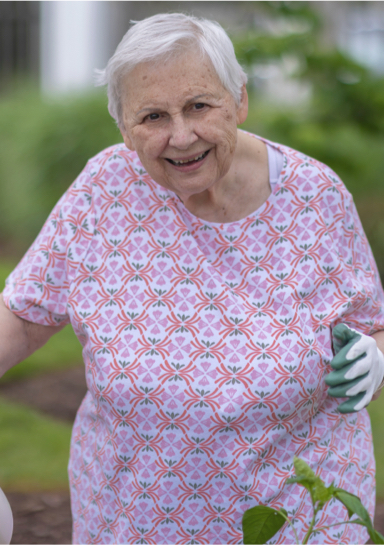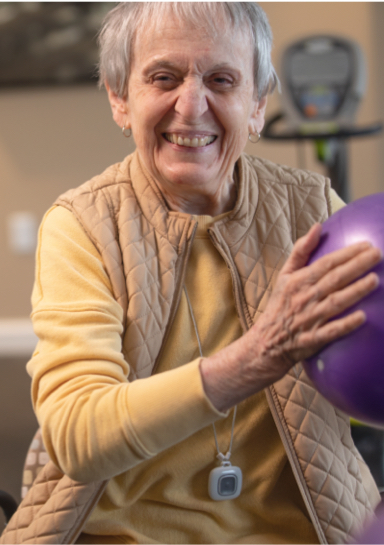Key Takeaways
- Walking is a simple yet highly effective exercise tailored to the needs of seniors.
- It offers numerous health benefits, including regulating blood sugar, improving mood, and protecting joints from unnecessary strain.
- This low-impact activity requires no special equipment, making it an affordable and accessible option.
- Regular walking can significantly benefit overall health, vitality, and quality of life for seniors.
It may seem simple, but for seniors, a stroll can be a powerful tool for maintaining health and staying active. Walking helps regulate blood sugar, boosts mood, and keeps joints safe from strain—all without the need for special equipment or costly gym memberships. Regular walking can transform daily life, offering incredible benefits that are accessible to almost everyone. This gentle exercise can be an easy and effective way for seniors to maintain their health and vitality, and it can even be done indoors when seniors have access to the right fitness amenities.
What Health Benefits Does Walking Offer?
The health benefits of walking can inspire you to incorporate it into your daily routine. Here are some of the most significant ways this simple activity can positively impact your overall well-being.
Stabilizes Blood Sugar Levels
Walking after meals helps your body process glucose more effectively. Even a gentle 10-minute stroll can make a significant difference in how your blood sugar responds to food. This benefit is particularly valuable for seniors managing diabetes or prediabetes, as it provides a natural way to support healthy blood sugar levels throughout the day.
Strengthens Your Heart
Your heart is a muscle, and like any muscle, it gets stronger with regular use. Walking increases your heart rate gradually, improving cardiovascular function without the intensity of high-impact exercises. This gentle cardio workout helps lower blood pressure, reduces the risk of heart disease, and improves overall circulation.
Provides Natural Pain Relief
Movement may seem counterintuitive when you’re experiencing aches and pains, but walking can help reduce discomfort. The gentle motion helps lubricate joints, while the release of endorphins acts as your body’s natural pain reliever. Many seniors find that regular walking reduces stiffness and improves their overall comfort level.
Costs Nothing
Unlike gym memberships, personal trainers, or expensive equipment, walking requires only a comfortable pair of shoes. You can walk anywhere—around your neighborhood, through a park, or even inside a shopping mall during bad weather. This accessibility makes it easy to maintain a consistent routine regardless of your budget.
Boosts Mental Health
Walking isn’t just good for your body. It’s excellent for your mind. The combination of gentle exercise, fresh air, and often social interaction can significantly improve mood and reduce feelings of depression or anxiety. Regular walking has been shown to improve the quality of sleep and increase overall life satisfaction.
How Much Should Seniors Walk?

The right amount of walking varies from person to person and depends on factors like age, fitness level, and overall health goals. While general guidelines recommend 30 minutes of moderate activity, such as brisk walking, on most days of the week, some individuals may benefit from walking more or less frequently.
For beginners, starting with shorter, slower walks and gradually increasing duration and pace can be a great approach. Others aiming for weight loss or specific fitness goals may need to walk longer distances or incorporate more intensity. It’s always important to listen to your body and consult with a healthcare professional to determine what’s best for your individual needs.
Talk to Your Doctor First
Before starting any new exercise routine, consult with your healthcare provider to ensure it is safe for you. They can help you determine a safe starting point based on your current health status, medications, and any existing conditions. Your doctor might also suggest specific modifications to make walking safer and more effective for you.
Signs You May Be Walking Too Much
Pay attention to your body’s signals. If you experience persistent fatigue, joint pain that worsens rather than improves, or shortness of breath that doesn’t resolve with rest, you should reduce your walking intensity or duration. It’s better to walk consistently at a comfortable pace than to push too hard and risk injury.
How Does The Wellington at Lake Manassas Encourage Healthy Living?
At The Wellington at Lake Manassas, part of Retirement Unlimited, Incorporated (RUI), staying active is a natural and enjoyable part of daily life. With a focus on wellness and community, residents have access to programs and amenities designed to support healthy living.
- Scenic Walking Trails: Beautifully maintained trails make it easy for residents to enjoy daily walks and connect with nature.
- RUI Fit Program: Personalized wellness plans include walking groups and fitness activities explicitly tailored to seniors’ needs.
- Supportive Community: A warm, welcoming environment with outdoor spaces perfect for solo strolls or group walks, fostering connection and shared goals.
In our community, staying active feels effortless and enjoyable, helping residents maintain healthy habits while being part of a vibrant, supportive community.
Taking Your First Steps Forward
Walking is a simple yet powerful way for seniors to boost their health, mood, and overall quality of life. From improved blood sugar control to natural pain relief, the benefits of regular walking are undeniable. At The Wellington at Lake Manassas, we’re committed to supporting all aspects of your health—physical, mental, and emotional.
Contact us today to discover how our community’s beautiful walking trails and wellness-focused environment can help you develop healthy habits that fit your lifestyle.














